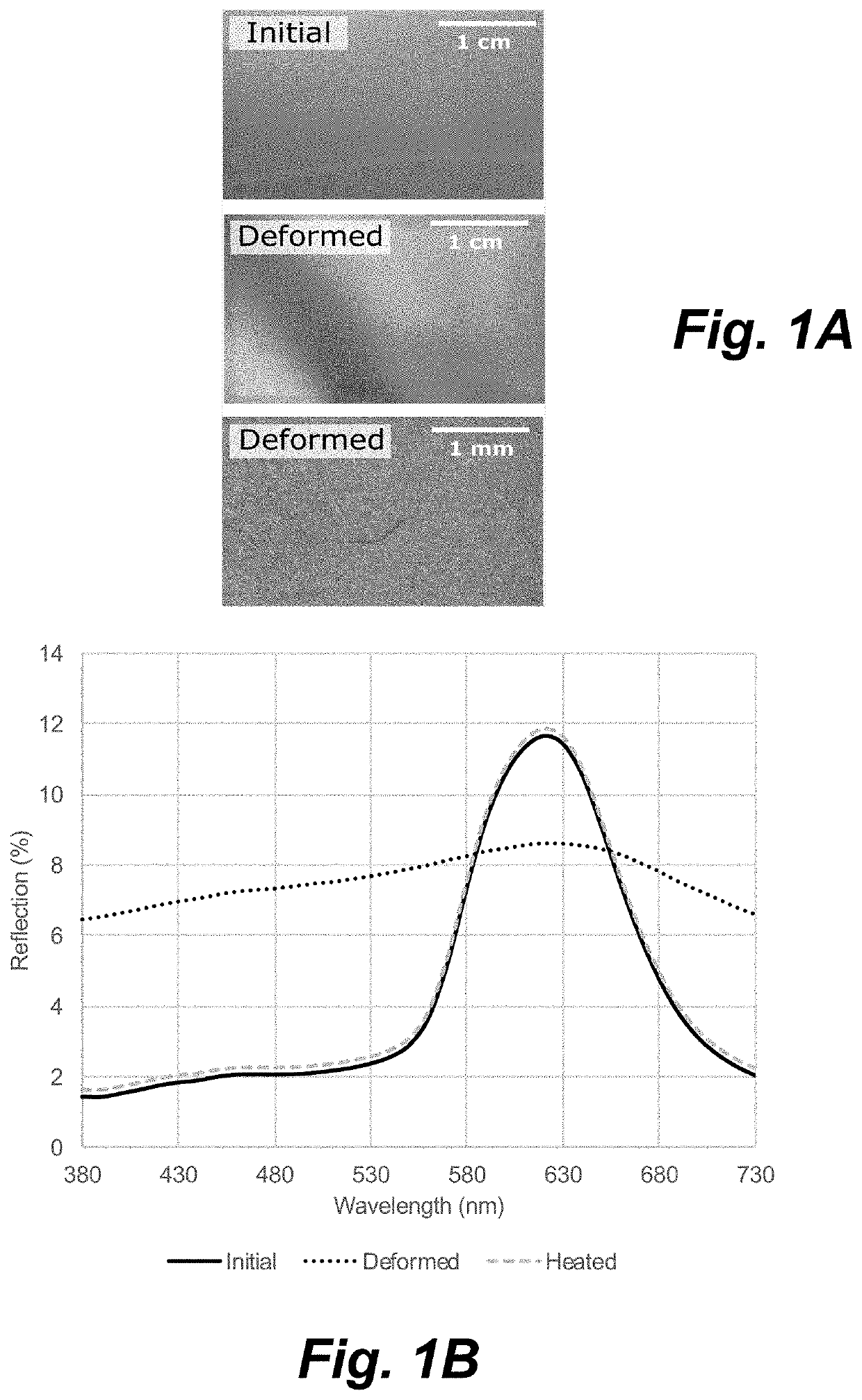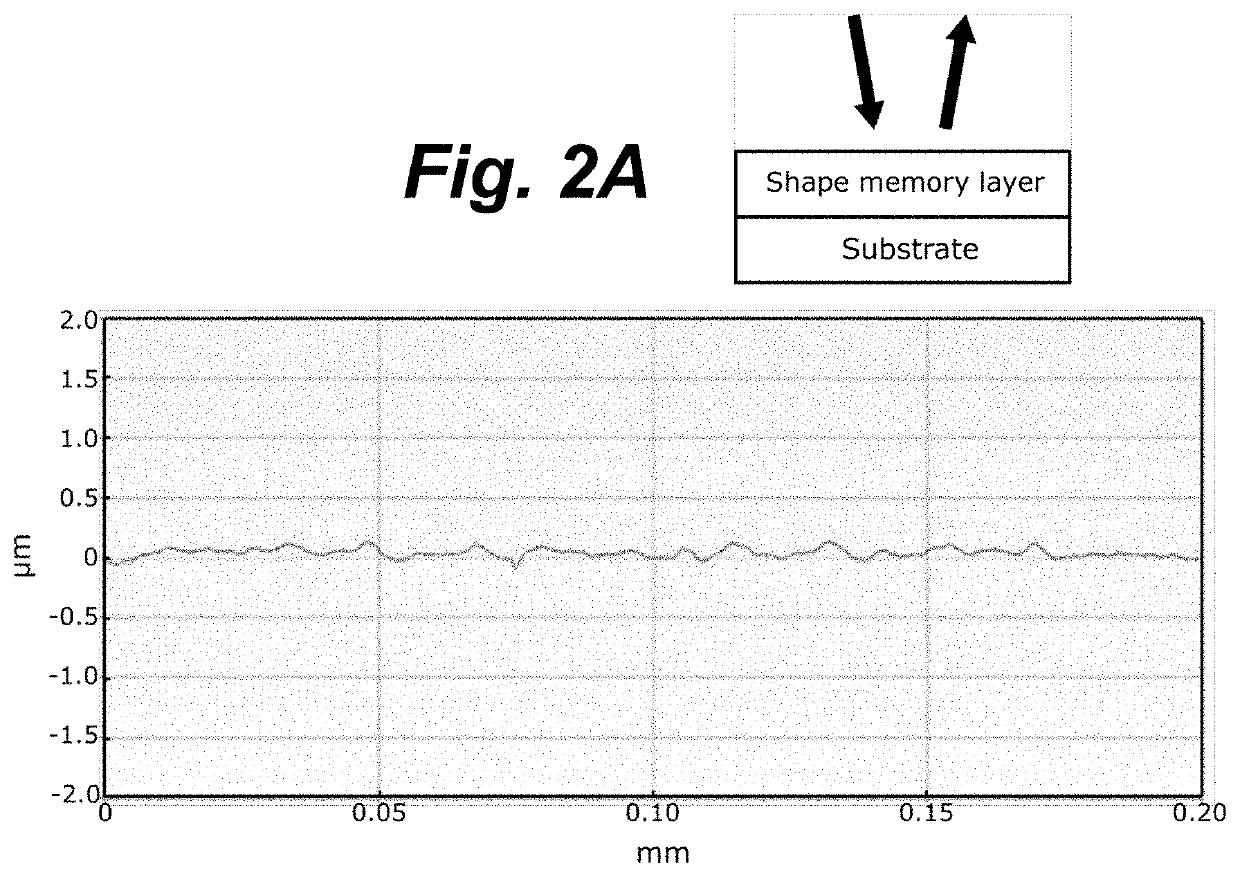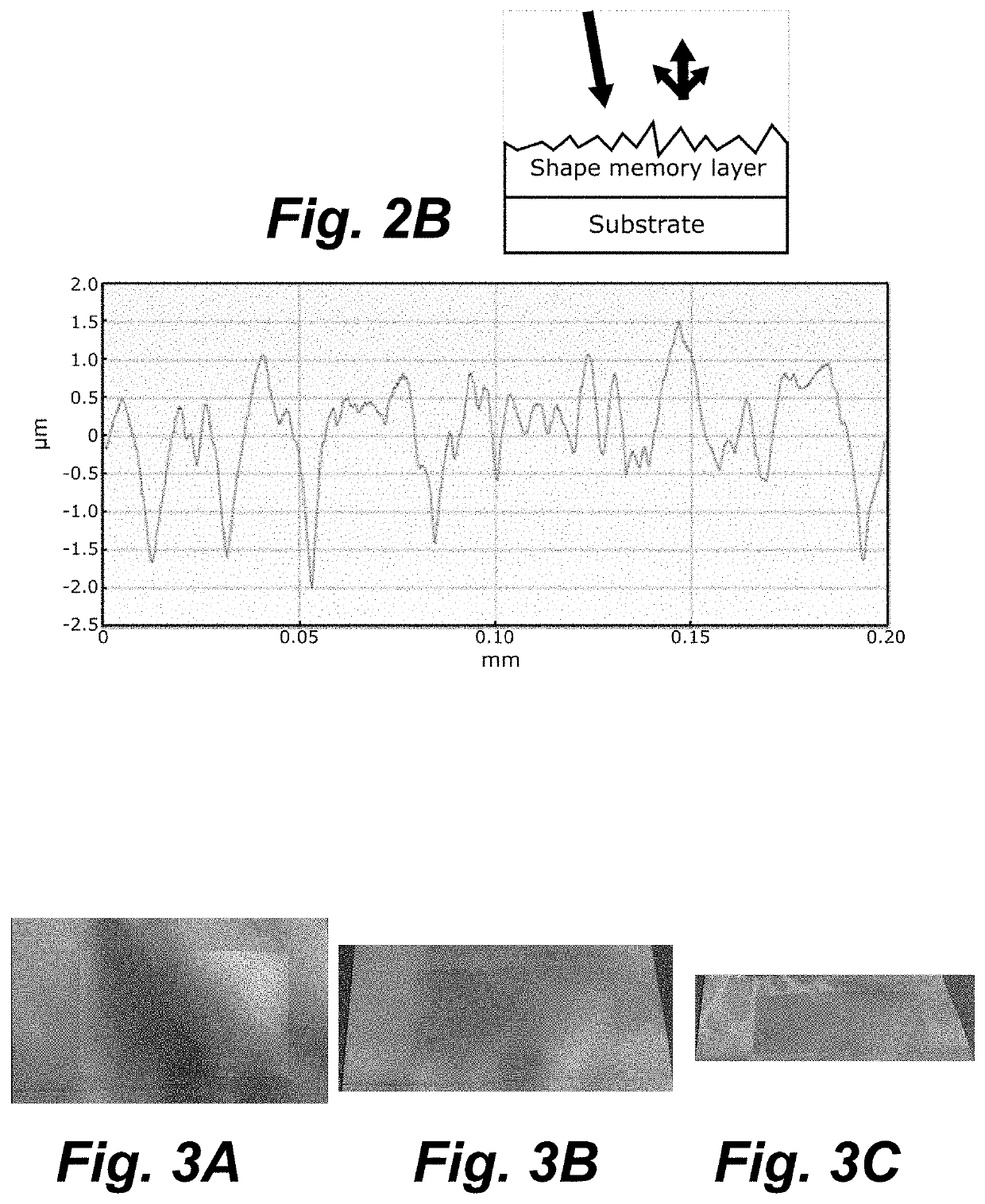Optical sensor based on shape memory between scattering and transparent modes
- Summary
- Abstract
- Description
- Claims
- Application Information
AI Technical Summary
Benefits of technology
Problems solved by technology
Method used
Image
Examples
working examples
Example 1 (E1)
[0085]A composite comprising an upper layer made of CLC polymeric material (red color) and a black flexible polyethylene terephthalate (PET) substrate layer, wherein the upper layer has a thickness of approx. 2.5 μm measured according to profilometry, was manufactured by depositing a CLC ink on a black flexible polyethylene terephthalate (PET) substrate layer using flexographic printing (IGT Printability Tester F1 from IGT Testing System Pte Ltd.), and subsequently cured using UV-irradiation. The glass transition temperature (Tg) of the upper layer was determined by differential scanning calorimetry (DSC) to be approx. 15-30° C., with a mid-point at 18.4° C. The layer was subsequently deformed above its Tg (35° C., 30 s, 6 bar) using a hot-embossing stamp (KBA-Metronic GmbH). In the experimental setup, the surface of the upper layer was in direct contact with a roughly structured rubber (Ra≈1 μm), and the upper layer was quickly cooled to room temperature upon removal ...
example 3
[0091]A composite comprising a transparent shape-memory polymeric material as an upper layer and a clean glass slide as a sheet of a substrate layer and a red-reflecting CLC polymeric material as a further sheet of the substrate layer was manufactured by coating a clean glass slide with a commercially available monoacrylate (DSM), crosslinker, and photoinitiator, and subsequently cured with UV-radiation. The Tg,SMP of the upper layer was determined to be approximately 30° C. The glass slide containing the acrylic coating was subsequently placed on top of the red-reflecting CLC polymeric material used in E1 as an upper layer.
[0092]Prior to deformation, the reflection spectrum of the transparent acrylic coating with the background of the CLC polymeric material (FIG. 5B) is identical to the reflection spectrum of the initial non-deformed upper layer of the composite of E1 (FIG. 1B). The upper layer was subsequently deformed using identical conditions as in E1 and E2, resulting in a par...
example 4
[0093]A composite comprising an upper layer as in E3 and a glass substrate layer, wherein in the upper layer additionally CLC particles are comprised, was manufactured by coating a clean glass slide with the acrylic coating precursors from E3 and additionally, a small amount of a CLC particle mixture (according to WO 2015 / 120950 A1). The CLC particle mixture consisted of green- and blue-reflecting CLC polymer particles, with a Tg of approximately 60-70° C. After coating, the precursors were cured with UV-radiation to result in a particulate upper layer consisting of the CLC particle mixture embedded in the acrylic binder. To prevent scattering (prior to deformation), it was ensured that the refractive index of the CLC particles and acrylic binder were matching (n˜1.5). The substrate layer containing the upper layer was subsequently placed on top of a black PET background, to reveal a blue tint (FIG. 6A).
[0094]Prior to deformation, the reflection spectrum of the acrylic coating with ...
PUM
| Property | Measurement | Unit |
|---|---|---|
| Temperature | aaaaa | aaaaa |
| Thickness | aaaaa | aaaaa |
| Length | aaaaa | aaaaa |
Abstract
Description
Claims
Application Information
 Login to View More
Login to View More - R&D
- Intellectual Property
- Life Sciences
- Materials
- Tech Scout
- Unparalleled Data Quality
- Higher Quality Content
- 60% Fewer Hallucinations
Browse by: Latest US Patents, China's latest patents, Technical Efficacy Thesaurus, Application Domain, Technology Topic, Popular Technical Reports.
© 2025 PatSnap. All rights reserved.Legal|Privacy policy|Modern Slavery Act Transparency Statement|Sitemap|About US| Contact US: help@patsnap.com



